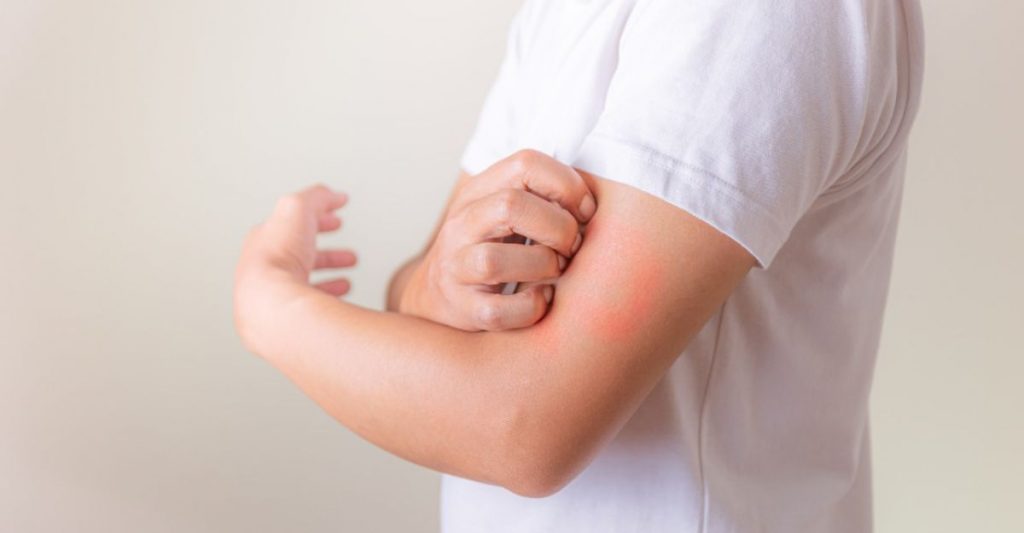Skin allergies can be extremely uncomfortable and even dangerous. If you suspect that you may have a skin allergy, it’s important to be aware of the symptoms and to see a doctor as soon as possible. Early treatment is the best way to prevent serious complications. In the section below, we will discuss nine skin allergy symptoms that you should not ignore.
Let’s take a look at them.
- Changing Moles
One skin allergy symptom you shouldn’t ignore is changes to your moles. If you have a mole that begins to change in color, size, or shape, it could be a sign of melanoma, which is a dangerous form of skin cancer. Be sure to show any changing moles to your doctor in the hospital so they can determine whether or not they are cause for concern. AskApollo is a health library where you will get all the information about skin conditions and available treatment options.
- Itchy Rashes
Another common skin allergy symptom is an itchy rash. This can be caused by anything from eczema to hives; if you’re experiencing one, you should see a doctor to check it out. Itchy rashes can be very uncomfortable, and in some cases, they can even lead to secondary infections if you scratch them too much.
- Chronic Dryness
If you suffer from chronic dryness, your skin is probably not producing enough oil. This can be due to genetics, hormones, or certain medications. Chronic dryness can lead to premature aging and make your skin more susceptible to infection. For this condition, you should try a moisturizer that contains hyaluronic acid or glycerin. In case of excess dryness, you can also use a humidifier.
- Butterfly Rash
A butterfly rash is a distinctive, red, blotchy facial rash that can occur in people with lupus. It typically covers the cheeks and bridge of the nose, which may worsen when sunlight is exposed. Though the butterfly rash is not usually painful, it can be unsightly and may cause embarrassment or low self-esteem. See your healthcare provider for treatment options if you develop a butterfly rash. There are many ways to treat a butterfly rash, including topical oral medications. You must never ignore it.
- Slow Sores
Slow sores are a type of skin allergy that can be extremely dangerous if left untreated. These sores typically start out as small, red bumps on the skin. They may also itch or burn. If slow sores are not treated, they can turn into large, painful ulcers. Additionally, slow sores can lead to severe infections and even death. Therefore, seeing a doctor as soon as possible is important if you develop any slow sores.
Slow sores are most commonly caused by bacteria, viruses, or other foreign substances that come into contact with the skin. However, they can also be caused by certain medical conditions or medications. If you have open wounds on your skin, you are at an increased risk of developing slow sores. People with weakened immune systems are also more susceptible to skin allergies.
- Yellow Coloring
A yellow coloring to the skin can indicate jaundice, a condition caused by a buildup of bilirubin in the blood. Jaundice is often a sign of liver disease and can also be a symptom of other conditions like pancreatitis or cancer. If you notice that your skin has taken on a yellowish hue, you should see a doctor immediately for further testing before it gets more severe.
- Redness
If your skin is red, it could be a sign of inflammation or an allergic reaction. If you have any other symptoms like itching, swelling, or difficulty breathing, you should seek medical attention immediately, as this could signify a more severe reaction. Otherwise, try to figure out what might have caused the redness and whether there are any irritants you should avoid in the future.
- Itchy Bumps
If you notice small, itchy bumps on your skin, it could be a case of hives. Hives are usually caused by an allergic reaction to something like food or medication. Stress or exposure to hot or cold temperatures can also be brought on. If you have hives, you should avoid any potential allergens and see a doctor if the bumps don’t go away within a few days.
- Blisters
If you have blisters on your skin, it could be a sign of a viral infection like chickenpox or shingles. Blisters can also be caused by certain autoimmune disorders like pemphigus or bullous pemphigoid. If you have painful blisters that keep coming back, you should see a doctor find out what might be causing them.
The Bottom Line
If you are experiencing any of the above symptoms, you must see a healthcare provider as soon as possible. Skin allergies can be extremely uncomfortable and even dangerous, so never ignore them! With early diagnosis, you can avoid any serious consequences and get on the road to recovery. Moreover, your provider can help you determine the best course of treatment, which may include medication, lifestyle changes, or other therapies.
